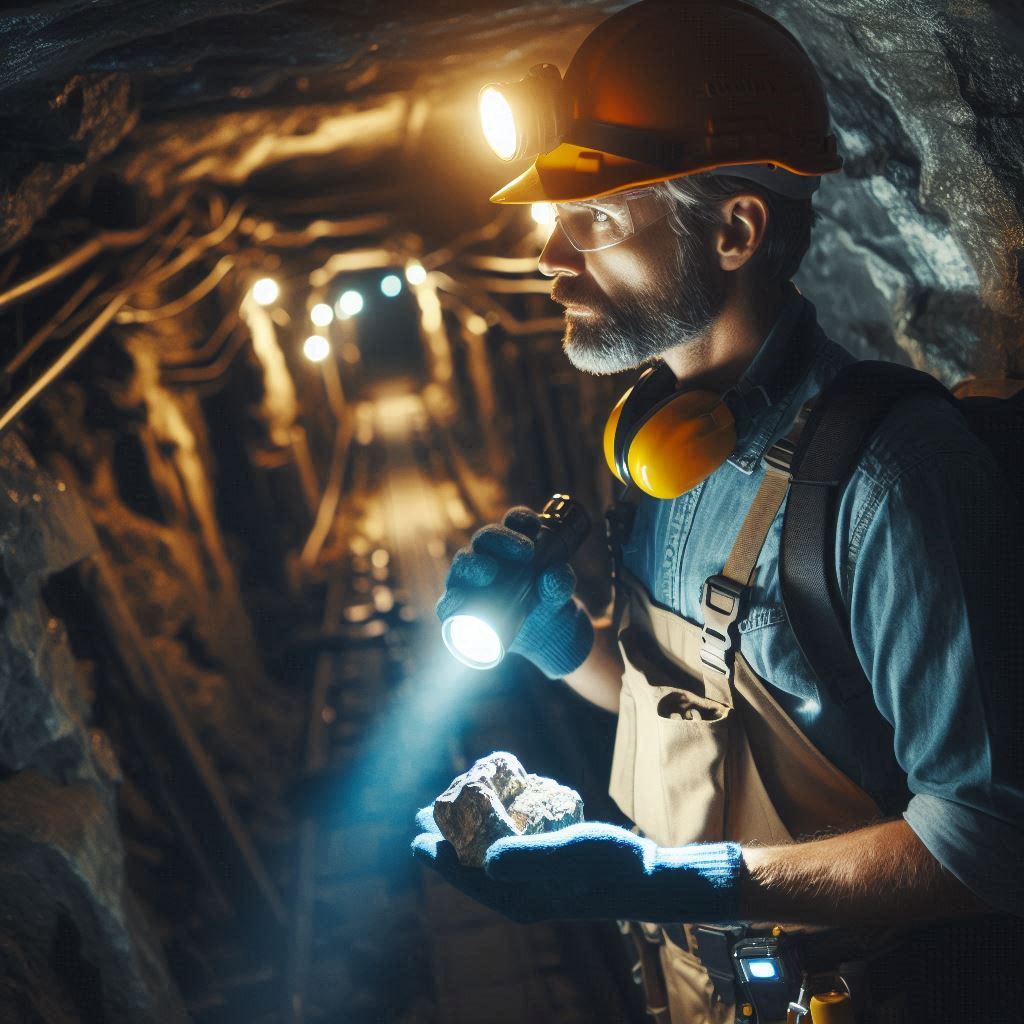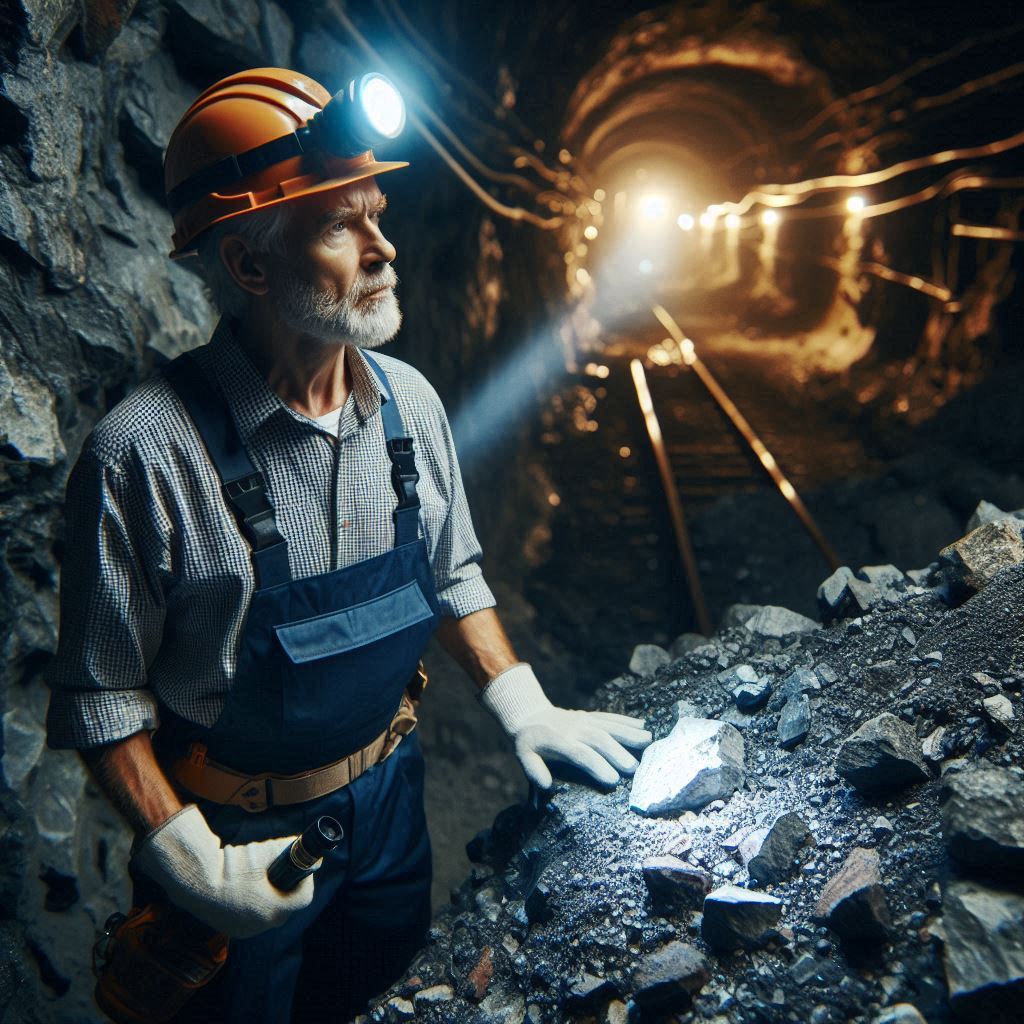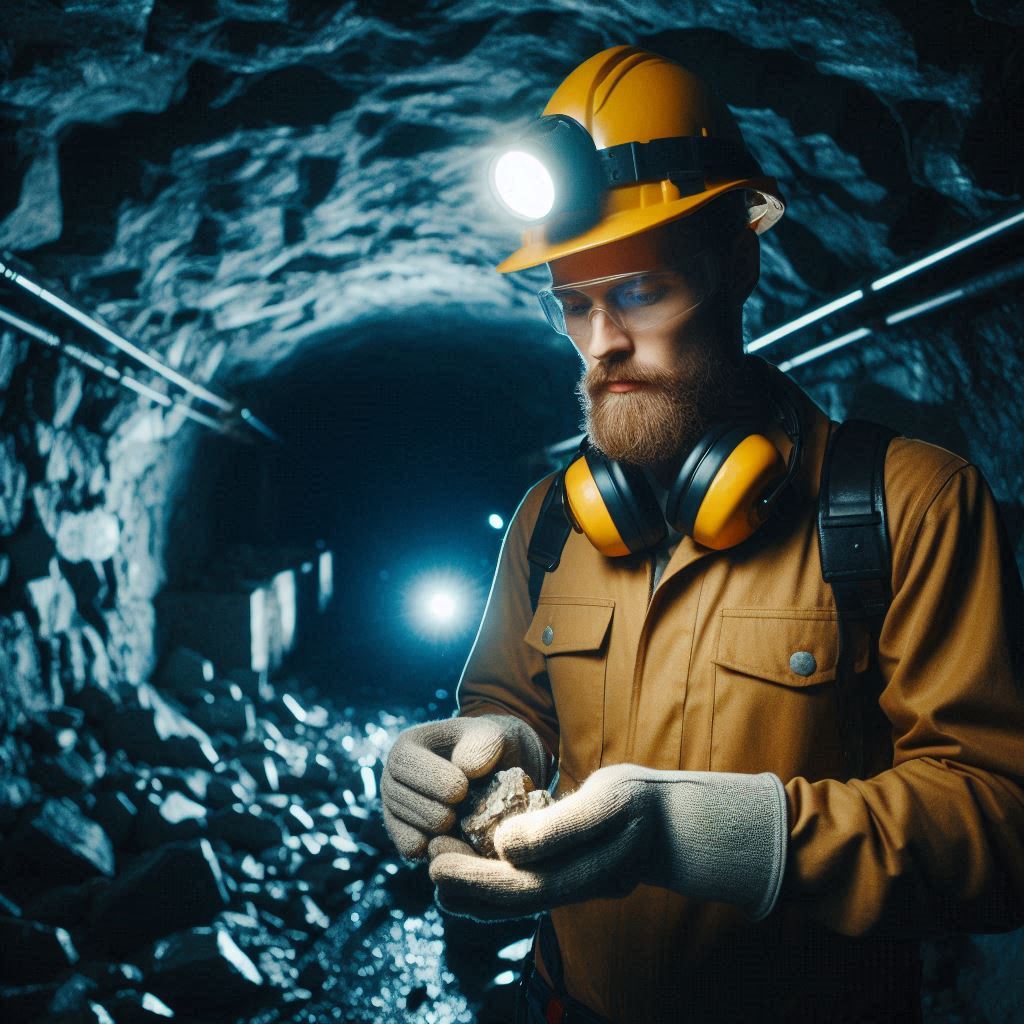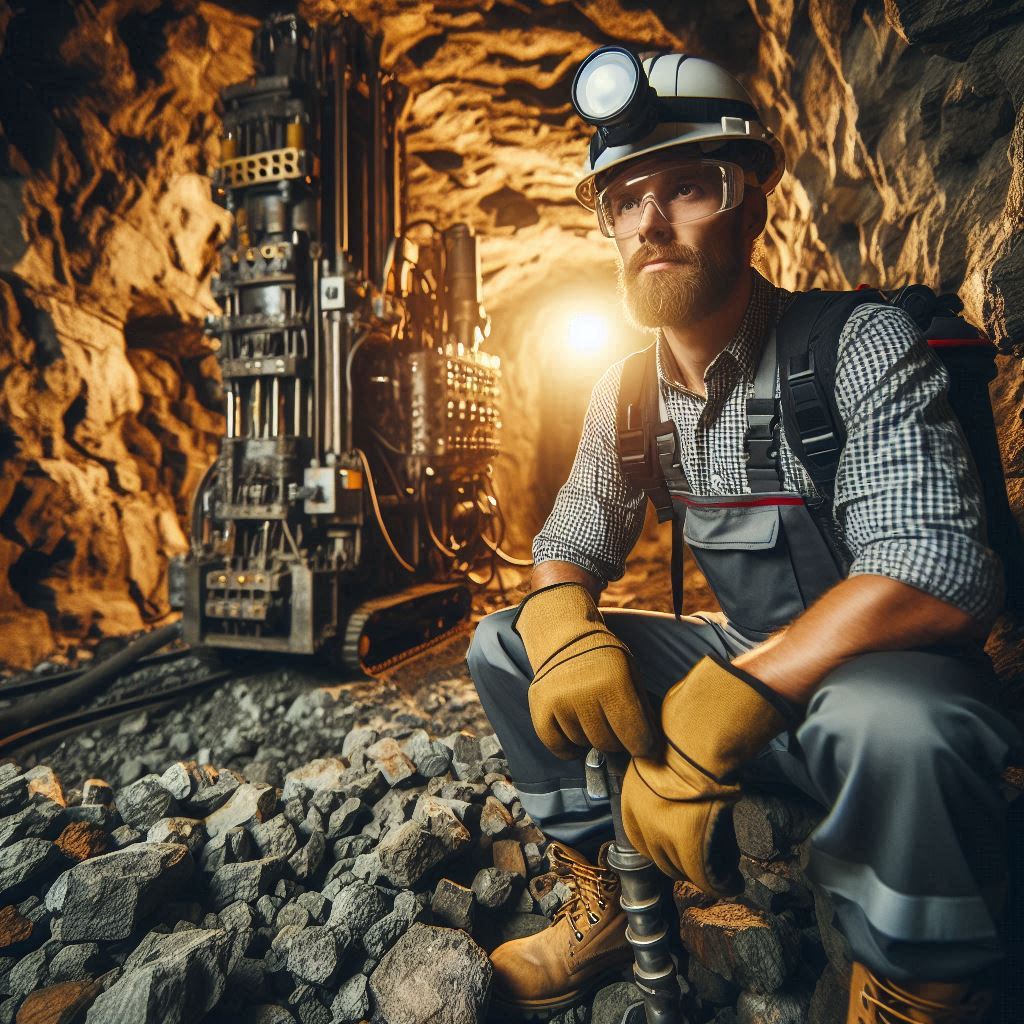Introduction
Mining activities have significant environmental impacts that must be addressed.
An engineer’s perspective offers valuable insights into mitigating these impacts.
Understanding the Environmental Impact
Engineers play a crucial role in analyzing and predicting the environmental consequences of mining operations.
They assess factors such as air and water pollution, land degradation, and ecosystem disruption.
Implementing Sustainable Practices
Engineers incorporate sustainable practices to minimize the impact of mining on the environment.
This may involve using advanced technologies, implementing efficient waste management systems, and reclamation of mined areas.
Regulatory Compliance and Risk Assessment
Engineers ensure that mining operations comply with environmental regulations to prevent negative impacts.
They conduct risk assessments to identify potential hazards and develop strategies to mitigate them.
Community Engagement and Stakeholder Communication
Engineers recognize the importance of engaging with local communities and stakeholders to address their concerns regarding mining activities.
They establish open communication channels to promote transparency and trust.
Research and Innovation
Engineers continuously research and innovate to develop technologies that reduce the environmental footprint of mining operations.
They explore alternative materials, energy sources, and processes to make mining more sustainable.
An engineer’s perspective on the environmental impact of mining is essential for addressing the challenges and developing solutions that prioritize environmental protection.
By integrating engineering expertise, we can ensure responsible and sustainable mining practices for the future.
Overview of Mining
Define What Mining Is
Mining extracts valuable minerals or other geological materials from the Earth.
It includes metals, coal, oil shale, gemstones, limestone, chalk, and other resources.
Mining operations extract these materials from the ground and use them to create products that are vital for everyday life.
Without mining, we would lack the raw materials needed for construction, manufacturing, and technology.
The industry plays a crucial role in the global economy, providing essential resources and employment opportunities.
Explain the Different Types of Mining Processes
There are several types of mining processes, each tailored to the resource being extracted and the geological conditions of the site.
Surface mining involves removing soil and rock overlying the mineral deposit.
This method includes open-pit mining, strip mining, and mountaintop removal.
Underground mining, on the other hand, requires digging tunnels or shafts to reach buried mineral deposits.
This method includes room and pillar mining, longwall mining, and block caving.
Placer mining involves extracting minerals from alluvial deposits, typically found in riverbeds and beaches.
Each mining process has its own set of techniques and tools, which are chosen based on the deposit’s depth, the material being mined, and environmental considerations.
The Significance of Mining in Today’s Society
Mining is vital for modern society, providing raw materials essential for various industries.
Metals like iron and copper are fundamental for construction and manufacturing.
Rare earth elements are crucial for producing electronics, renewable energy technologies, and advanced medical devices.
Coal and other fossil fuels remain significant energy sources, despite the growing emphasis on renewable energy.
Mining also contributes significantly to the economy, generating jobs and supporting local communities.
However, mining activities have environmental impacts, including habitat destruction, soil erosion, water contamination, and air pollution.
Engineers play a critical role in mitigating these impacts through innovative technologies and sustainable practices.
Mining engineers focus on developing efficient extraction methods while minimizing environmental harm.
They design systems to reduce waste, manage tailings, and rehabilitate mining sites.
Engineers also work on improving resource recovery and developing new technologies for cleaner, safer mining operations.
Their expertise is essential for balancing resource extraction with environmental stewardship.
As society continues to rely on mined materials, the importance of sustainable mining practices cannot be overstated.
Mining engineers’ contributions are crucial for ensuring that we meet our material needs without compromising the health of our planet.
Read: Biomedical Engineering: Research and Development
Environmental impact of mining
Common Environmental Issues Caused by Mining Activities
Mining activities can have a significant impact on the environment, leading to various environmental issues.
Some common problems include soil erosion, deforestation, and contamination of soil and water sources.
Soil Erosion
One of the most prevalent issues caused by mining is soil erosion, which occurs when the topsoil is removed during mining operations.
This loss of topsoil can lead to reduced soil fertility, affecting agricultural productivity in the surrounding areas.
Deforestation
Mining activities often involve clearing large areas of land to access mineral deposits, leading to deforestation.
This destruction of forests not only reduces biodiversity but also contributes to climate change by releasing carbon dioxide stored in trees.
Contamination of Soil and Water Sources
Mining activities can result in the contamination of soil and water sources through the discharge of toxic chemicals and heavy metals.
These pollutants can have a detrimental impact on the health of both humans and wildlife.
Effects on Air, Water, and Land Pollution
Mining operations can also contribute to air, water, and land pollution, further exacerbating environmental issues.
Air Pollution
Mining activities release particulate matter, sulfur dioxide, and nitrogen oxides into the air, leading to air pollution.
This pollution can have adverse effects on human health, causing respiratory problems and contributing to global warming.
Water Pollution
Mining activities can contaminate water sources with heavy metals, chemicals, and sediment, leading to water pollution.
This pollution not only affects aquatic ecosystems but also poses risks to human health through the consumption of contaminated water.
Land Pollution
Mining operations can result in the deposition of waste materials on land, causing land pollution.
This can disrupt natural habitats and ecosystems, leading to the loss of biodiversity and the degradation of soil quality.
Mining’s Impact on Habitat Destruction and Loss of Biodiversity
Mining activities can have severe consequences for habitat destruction and loss of biodiversity, threatening the delicate balance of ecosystems.
Transform Your Career Today
Unlock a personalized career strategy that drives real results. Get tailored advice and a roadmap designed just for you.
Start NowHabitat Destruction
Mining operations often involve clearing large areas of land, displacing native vegetation and wildlife.
This habitat destruction can disrupt ecosystems and reduce the availability of resources for local flora and fauna.
Loss of Biodiversity
Mining activities can lead to a loss of biodiversity by destroying habitats and disrupting ecosystems.
This loss of biodiversity can have far-reaching consequences, affecting the stability and resilience of ecosystems.
In a nutshell, the environmental impact of mining is multifaceted, leading to a range of issues such as soil erosion, deforestation, pollution, habitat destruction, and loss of biodiversity.
It is crucial to consider these environmental concerns and implement sustainable mining practices to minimize the adverse effects on the environment.
Read: How Agricultural Engineers Improve Crop Yields
Engineer’s Role in Mining
Engineers play a crucial role in the mining industry, as they are responsible for designing, constructing, and operating mining facilities. Their main responsibilities include:
- Developing plans for extracting minerals efficiently and safely
- Implementing and overseeing mining operations to ensure compliance with regulations
- Evaluating the environmental impact of mining activities
- Designing measures to mitigate negative effects on the environment
- Collaborating with environmental experts to develop sustainable solutions
How Engineers Influence Mining Practices
Engineers can influence mining practices by integrating environmental considerations into every stage of the mining process. They can:
- Advocate for the use of advanced technologies to minimize environmental impact
- Implement efficient water management systems to reduce water consumption
- Optimize energy usage through the use of renewable energy sources
- Design waste management strategies to minimize pollution and contamination
- Utilize ecological restoration techniques to rehabilitate mining sites
Importance of Sustainable Mining Practices
Sustainable mining practices are essential to minimize the environmental impact of mining activities and ensure the long-term viability of the industry. The importance of sustainable mining practices includes:
- Preservation of natural resources for future generations
- Protection of ecosystems and biodiversity in mining areas
- Reduction of greenhouse gas emissions and carbon footprint
- Enhancement of community relations and social responsibility
- Compliance with environmental regulations and corporate sustainability goals
Overall, engineers have a vital role to play in promoting sustainable mining practices and minimizing the environmental impact of mining activities.
By incorporating environmental considerations into mining operations, engineers can help protect the environment and support the long-term sustainability of the industry.
Read: Exploring Subfields of Aerospace Engineering
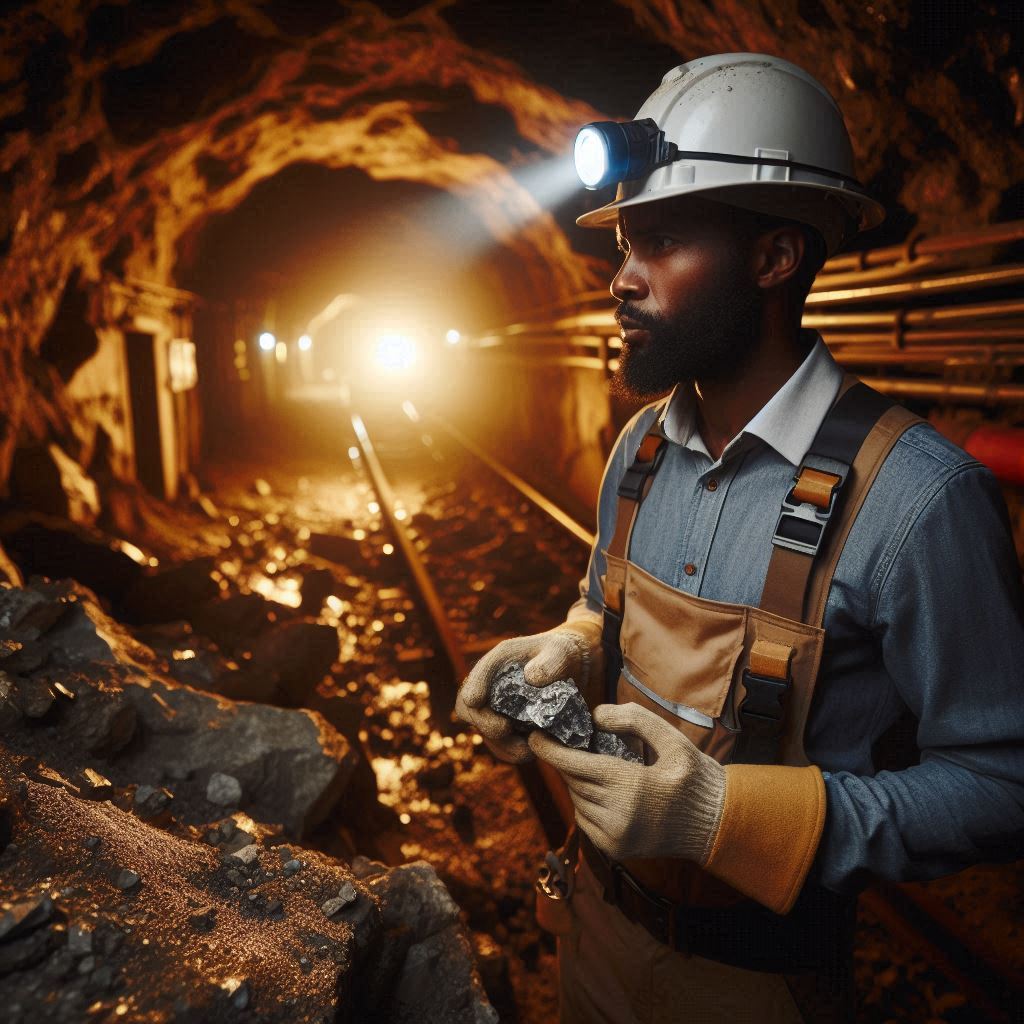
Technologies and innovations in mining
Advancements in Mining Technologies
As the mining industry recognizes the importance of reducing its environmental impact, various technologies and innovations have been developed to address this issue.
These advancements aim to make mining operations more sustainable and eco-friendly.
Automation and Robotics
One of the key technologies that have gained traction in the mining industry is automation and robotics.
This includes the use of autonomous vehicles, drones, and robotic systems for mining activities.
These technologies not only improve efficiency but also reduce the environmental impact by minimizing the use of fossil fuels and limiting emissions.
Sensor-Based Sorting
Sensor-based sorting technology allows miners to separate valuable minerals from waste materials more efficiently.
By utilizing sensors and advanced algorithms, this technology helps reduce the amount of material that needs to be processed, thereby decreasing energy consumption and waste generation.
Advanced Water Management Systems
Mining operations often require a significant amount of water, which can have a negative impact on local ecosystems.
Advanced water management systems, such as water recycling and treatment technologies, help in reducing water consumption and minimizing the discharge of contaminated water into the environment.
Success Stories of Sustainable Mining Practices
Several mining companies have successfully implemented sustainable practices by incorporating advanced technologies into their operations.
These case studies serve as examples of how the adoption of innovative solutions can lead to a more environmentally responsible approach to mining.
Rio Tinto’s Autonomous Haulage System
Rio Tinto, a global mining company, has implemented an Autonomous Haulage System in its iron ore mines in Western Australia.
This system uses driverless trucks to transport ore, resulting in improved safety, higher productivity, and reduced fuel consumption.
Barrick Gold’s Water Recycling Initiatives
Barrick Gold, one of the largest gold mining companies in the world, has introduced water recycling initiatives in its operations.
By treating and reusing wastewater, Barrick Gold has reduced its freshwater consumption and minimized the impact on local water sources.
BHP’s Carbon Capture and Storage Projects
BHP, a leading resources company, has invested in carbon capture and storage projects to reduce greenhouse gas emissions from its mining operations.
By capturing and storing CO2 underground, BHP aims to mitigate its environmental impact and contribute to climate change mitigation efforts.
Challenges in Adopting New Technologies
While the benefits of new technologies in mining are evident, the industry faces several challenges in adopting these innovations. These challenges can range from technological barriers to financial constraints and regulatory hurdles.
High Initial Investment Costs
Implementing new technologies in mining often requires a significant upfront investment, which can be a challenge for many companies, especially smaller operators.
The high costs associated with purchasing and deploying new equipment can act as a barrier to adoption.
Technological Barriers
Some mining companies may lack the technical expertise or resources needed to effectively implement and utilize new technologies.
This could result in a slow uptake of innovative solutions and hinder the industry’s progress towards more sustainable practices.
Transform Your Career Today
Unlock a personalized career strategy that drives real results. Get tailored advice and a roadmap designed just for you.
Start NowRegulatory and Permitting Challenges
Regulations and permitting requirements play a crucial role in shaping the adoption of new technologies in the mining industry.
Complying with environmental standards and obtaining necessary permits can be time-consuming and costly, leading to delays in implementation.
Read: The Impact of Aerospace Engineering on Modern Life
Regulations and Policies Governing Mining
The Existing Regulations and Policies Concerning Mining Activities
Mining activities follow specific regulations and policies designed to minimize environmental impact.
Laws like the Clean Water Act and the Clean Air Act regulate mining operations in the United States.
These regulations aim to control water and air pollution from mining activities.
The National Environmental Policy Act (NEPA) requires mining companies to conduct environmental assessments before starting new projects.
This ensures that potential environmental impacts are identified and mitigated.
Internationally, the Extractive Industries Transparency Initiative (EITI) promotes open and accountable management of natural resources.
These regulations aim to balance mining activities with environmental protection.
The Role of Government Agencies in Enforcing Environmental Standards
Government agencies play a crucial role in enforcing environmental standards in mining.
The Environmental Protection Agency (EPA) oversees the implementation of federal environmental laws.
The EPA monitors mining operations to ensure compliance with regulations.
State agencies also play a vital role in regulating mining activities within their jurisdictions.
They issue permits, conduct inspections, and enforce state-specific environmental laws.
Internationally, organizations like the United Nations Environment Programme (UNEP) work with governments to promote sustainable mining practices.
These agencies help prevent environmental degradation caused by mining activities.
The Need for Stricter Regulations to Protect the Environment
Stricter regulations are essential to protect the environment from the impacts of mining.
Current regulations often fail to address all environmental risks.
For instance, regulations may not adequately cover the long-term effects of mining on ecosystems.
Stricter regulations can ensure comprehensive environmental assessments and more robust mitigation measures.
They can also enforce higher standards for waste management and pollution control.
Stricter regulations can encourage mining companies to adopt more sustainable practices.
By prioritizing environmental protection, stricter regulations can help preserve natural resources for future generations.
Community Engagement and Social Responsibility
The Importance of Engaging with Local Communities Affected by Mining Operations
Engaging with local communities affected by mining operations is essential for several reasons.
First, mining activities can significantly impact local environments and economies.
Communities near mining sites often experience changes in land use, water quality, and air quality.
These changes can affect agriculture, fishing, and other local industries.
By engaging with these communities, mining companies can better understand their concerns and needs.
Second, community engagement fosters trust and cooperation.
When mining companies communicate openly and transparently with local residents, they build relationships based on trust.
This trust can lead to smoother project implementation and reduced conflict.
Additionally, involving communities in decision-making processes ensures that their voices are heard and considered.
This inclusion can mitigate potential negative impacts and enhance positive outcomes for all parties involved.
The Concept of Corporate Social Responsibility in the Mining Industry
Corporate social responsibility (CSR) in the mining industry involves companies taking responsibility for their environmental and social impacts.
Mining companies must operate ethically and sustainably to gain and maintain their social license to operate.
CSR goes beyond legal compliance; it includes voluntary actions that benefit society and the environment.
CSR initiatives in mining often focus on environmental stewardship, community development, and employee welfare.
For instance, companies may invest in technologies that reduce pollution and conserve resources.
They might also support education, healthcare, and infrastructure projects in local communities.
Moreover, promoting safe working conditions and fair labor practices are integral to CSR in mining.
Examples of Successful Community Engagement Initiatives by Mining Companies
Several mining companies have successfully implemented community engagement initiatives.
For example, Anglo American has established the “Living with Dignity” program in South Africa.
This initiative focuses on improving the quality of life for communities around their mining operations.
It includes building schools, healthcare facilities, and providing clean water.
Another example is Rio Tinto’s community agreements with Indigenous groups in Australia.
These agreements outline the company’s commitments to respecting Indigenous rights and preserving cultural heritage.
They include provisions for employment, training, and business development opportunities for Indigenous people.
In Canada, Goldcorp’s “Creating Choices” program empowers women in mining communities.
The program offers education, training, and mentorship to help women pursue careers in mining and related fields.
This initiative has led to increased female participation in the industry and improved economic outcomes for families.
In summary, engaging with local communities and upholding social responsibility are critical for the mining industry’s sustainable future.
By addressing community concerns, fostering trust, and implementing meaningful CSR initiatives, mining companies can achieve long-term success and contribute positively to society.
Discover More: How to Gain Hands-On Experience in Engineering
Case Studies of Environmental Impact Assessments
Environmental impact assessments (EIAs) are essential for understanding mining projects’ ecological effects.
By examining case studies, we can gain insights into the practical applications and outcomes of these assessments.
Present Case Studies of Environmental Impact Assessments Conducted for Mining Projects
Several mining projects have undergone rigorous EIAs to evaluate their environmental implications.
One notable case is the Mount Polley mine in British Columbia.
The assessment focused on water quality, biodiversity, and land use changes.
Another example is the Grasberg mine in Indonesia, which assessed impacts on tropical forests and local communities.
These case studies provide valuable data on the extent and nature of mining’s environmental footprint.
The Findings and Recommendations from the Assessments
The findings from these EIAs revealed significant environmental concerns.
At Mount Polley, the assessment identified potential risks to aquatic ecosystems from tailings storage facilities.
The Grasberg assessment highlighted deforestation and habitat loss, affecting endangered species.
Based on these findings, the assessments recommended several mitigation measures.
For Mount Polley, improving tailings management and enhancing water treatment processes were critical recommendations.
In Grasberg, the focus was on reforestation initiatives and habitat restoration efforts.
These recommendations aimed to minimize adverse environmental impacts and promote sustainable mining practices.
The Effectiveness of Mitigation Measures Implemented Based on the Assessments
The implementation of mitigation measures varied in effectiveness across different projects.
At Mount Polley, enhanced tailings management practices reduced the risk of water contamination, showing a positive outcome.
However, challenges remained in fully restoring the affected ecosystems.
The Grasberg mine’s reforestation efforts helped recover some lost habitats, but the long-term sustainability of these measures required continuous monitoring.
Overall, while some mitigation measures proved effective, others highlighted the need for ongoing evaluation and adaptation.
The lessons learned from these case studies underscore the importance of robust environmental management strategies in mining operations.
In a nutshell, examining case studies of environmental impact assessments for mining projects provides valuable insights into their effectiveness and areas for improvement.
The findings and recommendations from these assessments guide the implementation of mitigation measures, which vary in their success.
By continually evaluating and adapting these strategies, we can strive for more sustainable and environmentally responsible mining practices.
Gain More Insights: How to Land Your First Job as a Cybersecurity Analyst
Delve into the Subject: How to Advance in Your Computer Engineering Career
Conclusion
The key points discussed, it is evident that mining activities have significant environmental impacts that must be addressed.
As an engineer, it is crucial to consider sustainable practices and innovative solutions to mitigate these effects.
Emphasizing the importance of an engineer’s perspective in addressing the environmental impact of mining, we can leverage technological advancements and design strategies to minimize harm to ecosystems and communities.
Encouraging further research and discussion on sustainable mining practices is essential for ensuring responsible resource extraction and preserving the environment for future generations.
Collaboration between engineers, policymakers, and stakeholders will be key in finding holistic solutions that balance economic interests with environmental protection.
In closing, by incorporating an engineer’s perspective, we can work towards achieving a more sustainable mining industry that prioritizes environmental stewardship and social responsibility.
Let’s continue to explore and implement innovative approaches to minimize the environmental footprint of mining operations.

